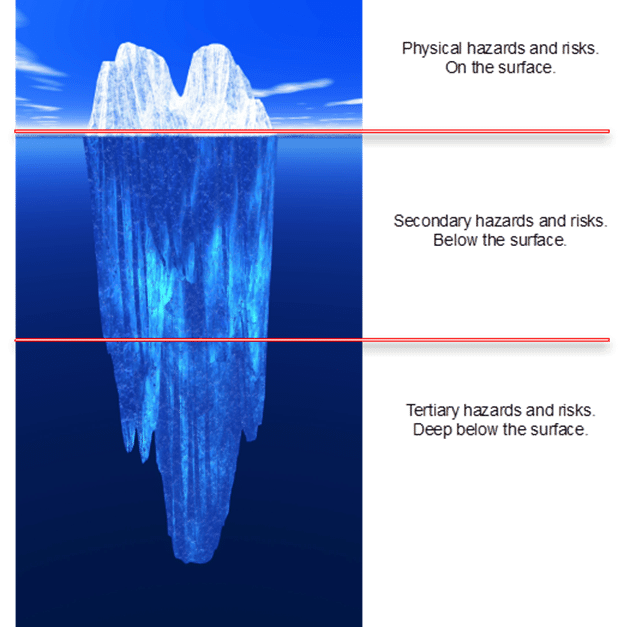Originally posted on May 24, 2014 @ 12:13 AM
Conducting a Psychology and Culture Safety Walk
Not to be confused with the Gemba Safety Walk!
Safety walks, observations and conversations are foundational to managing safety in organisations. Site walks, office walks or whatever you want to call them are a critical strategy in ‘management by walking around’. You can’t assess or address assumptions, beliefs, values and attitudes very well by sitting at a desk or signing off checklists. Leaders know that dialogue and walking around must be a priority.
Walks, observations and talks are the big challenge for leaders and managers who have high level desk-constrained obligations. Effective leaders know how to strike a balance between email management and face-to-face management.
Safety walks often focus on important physical hazards and risks. These ‘primary’ hazards and risks are visible and on the surface. However, it’s just as important to attend to ‘secondary’ (psychological) and ‘tertiary’ (cultural) hazards and risks. Secondary and tertiary hazards and risks are below the surface and are largely unseen.
Safety walks must do much more than police easy ‘cosmetic’ targets such as PPE. Walks, observations, listening and conversations need to tune-in to cultural and psychological hazards and risks in the workplace. The iceberg metaphor in Figure 1 captures the challenge.
Figure 1. Primary, Secondary and Tertiary Hazards and Risks
A psychology and culture safety walk adds a new dimension to the practice of conducting a safety walk. A psychology and culture safety walk observes and listens for psychological and cultural hazards and risks. Knowing what these hazards and risks look like and sound like requires training, practice and skill development.
General safety walks focus on what is ‘seen’, the tip of the iceberg. Psychology and culture safety walks focus on what is ‘unseen’, the 70% below the water line. It is often the things we cannot see which drive culture and implicit knowledge. It is often undisclosed assumptions that send things pear shaped in times of turbulence.
Effective walks, observations and conversations are not something one does automatically. Effective questioning and listening are something one has to learn and develop with practice. It’s all a matter of focus and perception,
What are the skills of an effective psychology and culture safety walk? What kinds of things does a psychology and culture safety walk look for? The following are a helpful foundation:
1. Most importantly it is critical to get the balance right between listening and telling. Safety walks should be about dialogue not just monologue.
2. Observing and listening must not be perceived as ‘spying’ and ‘policing’. The listening needs to be genuine, not a loaded gun waiting to shoot people down for the first mistake. Creating a climate of acceptance for observations and conversations takes training and time.
3. A psychology of safety walk should be understood as an education and learning activity for both observer and worker.
4. A psychology of safety walk must be a positive experience. There should be a good balance between negative and positive discussion, especially finishing on positives.
5. Observers should be trained and practiced in listening for cultural language. They should be able to hear values and assumptions in discussion that have implications for safety.
6. Observers should be practiced in the art of open questioning. Stimulating conversation and avoiding entrapment into lecture mode is a real skill that requires work.
7. Observers need to stimulate discussion, observe and listen for:
a. Perceptions
b. Interruptions
c. Disruptions
d. Work flow
e. Work goals
f. Time pressures
g. Fatigue
h. Stereotypes
i. Generalisations
j. Stressors
k. Blaming language
l. Simplistic language
m. Projections
n. Dismissal
o. Resignation
8. It is important that the observer know and is conscious of what they are doing. A psychology of safety walk need not be announced to everyone, but the observer needs to undertake such a walk with intentionality.
It is amazing what an experienced observer can detect in a short walk and talk. It is important that small issues not distract the safety observer but that influencing culture takes the major focus.




Do you have any thoughts? Please share them below